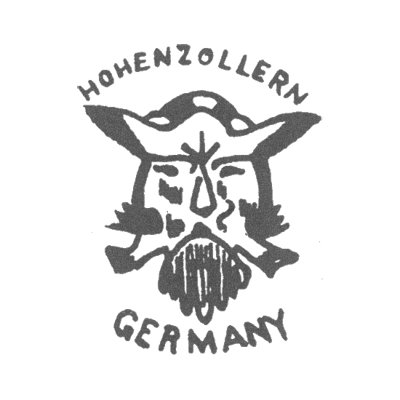
Image 020707-03-01
Used between 1868 and 1918, the "Hohenzollern" and "Germany" mark.
The early years of this factory are often ignored in common literature, probably because it is easier than having to deal with the various different (and misleading) claims regarding its actual founding. What later should become the Steinmann factory started off in the year 1818; at that time an (as far as I could see, unnamed) entrepeneur started off with small scale stoneware production. Around 1835 business was taken over by Carl Rädisch, who transformed it into a decoration studio for porcelain, stoneware and glassware. He started construction of a second, larger, stoneware factory in 1840; this factory in 1868 expanded as to also produce porcelain. One can find this year frequently quoted to have been the year in which the Steinmann business was founded; this however is pure nonsense.
In reality, Rädisch was in 1872 taken over by the Tiefenfurter Porzellan-Manufactur-Gesellschaft shortly before that limited liability company became the incorporated Tiefenfurter Porzellan- und Chamottewaaren-Fabriken AG; they already owned multiple factories and mining operations at that time. The older part of the Rädisch factory was then sold again in 1876; it continued until 1893 under the name of Steingut- und Porzellanfabrik Sporleder & Benker.
The Tiefenfurter Porzellan- und Chamottewaaren-Fabriken AG on the other hand already dissolved in 1883 and the last director of that corporation, Thuringian Kuno Hugo Steinmann (*1839-†1893), purchased the newer part of the former Rädisch factory which had produced porcelain and, with around 100 workers, produced breakfast, tea and coffee sets, wash basin sets, bread and cake baskets, dishes and flower pots. For export to America, the factory also produced beard cups, mugs, jugs, egg cups and hand candlesticks. A short time later the factory already exported to East India and Australia.
It did not take long and Steinmann also introduced an own Old Ivory series, just like Reinhold Schlegelmilch and the Porzellanfabrik Hermann Ohme. Many Ohme collectors regard all other manufacturers as being imposters on the Old Ivory market but one should keep in mind that the German termed Elfenbeinporzellan had been produced by others much earlier and Old Ivory was simply a rough translation which had also been used before.
When Steinmann died in 1893 his oldest son Walter (*1877-†1934) was still too young to succeed him. Business was therefore continued by the director Gustav Müller who was in office until 1899, the year Walter returned after having finished his apprenticeship in Bremen and having spent a short time in the United States as to get a feeling for the target market there.
Around 1900/1901 he expanded by purchasing the Porzellanfabrik "Silesia", also from Tiefenfurt. This small business belonged to Otto Schmidt since 1897 and (most probably) started off originally as stoneware factory in 1826 (or 1832, depending on source), founded by Christian Matthiesen. The latter should not to be confused with the other part of the Matthiesen family mentioned in context with the factory of Levinsohn / Donath.
In 1903 Walter Steinmann married Maria Donath, a daughter of his competitor Paul Donath which had died two years earlier. This marriage however did not influence any of the involved businesses. Compared with many other companies the factory had a fairly constant workforce over time and it appears that every expansion process was very well planned. Steinmann preferred factory modernization over employing numerous new workers and so the numbers show 225 workers for the year 1905 followed by 250 workers in 1913 (with a further 80 working at the "Silesia" subsidiary), and 260 workers for 1930.
Another noteworthy occasion is that the factory in 1905 received a gold medal award at the Görlitz fair. Over time the internal decoration department had been equipped with an own print shop for transfers as well as an "Aerographenanlage", a specialized decoration area based on Charles Burdick's "Aerograph", an early form of the airbrush we know today. Up until the First World War the factory steadily exported goods to Africa, Australia, East India, England and North America; the loss of these markets during and after the war were a heavy blow.
The company asserted itself on the market by developing new shapes and patterns for its various services, fruit sets, canisters and ash trays. Furthermore, it started to produce gift items and figurines. Especially tea, coffee and dinner sets with Far Eastern shapes and decors and, in the 1930s, dishes made of delicate beige-colored ivory porcelain became extremely popular. Sales were ensured via representatives in Hamburg, London, Barcelona, Copenhagen, Hamburg, London and Oslo.
Following the worldwide economic crisis of 1929 the factory shifted away from porcelain and concentrated on oven proof ceramics in a fight for survival. The total number of employees was even cut back to just over 100, however everything was in vain. The former family-owned company was liquidated in 1932; operations continued in form of a bank consortium-owned limited liability company which pro forma kept the original name including the "GmbH" suffix as to show the changed liability status.
The number of workers trebled in just two years in an effort to become competitive once more; while the main factory produced utility porcelain and luxury china, the "Silesia" subsidiary produced fine stoneware. But banks are not ceramicists, and so the consortium in 1938 handed responsibility to the newly-installed managing director Walther Becht together with as deputy managing director Günther Steinmann, son of Walter and Maria Steinmann, née Donath.
In the year 1943 Walther Becht received the opportunity to cheaply acquire the former Steinmann assets. It was however a short lived independence as Becht was expropriated by the Allies only two years later; the factory was then stripped as part of the reparations.
But Walther Becht was far from beaten. In 1952 he established the Oberhessische Keramik, Walther Becht AG in the town of Schlitz in the Hesse region of Germany, a company which later became world famous during the Mid-Century Modern ("Fat Lava") period.
Next to the marks shown here, Steinmann also registered various trademarks including "Tonzellan", registered at the RWZR under №·497·326 on November 8th 1937.
A few marks used by Steinmann carry the very peculiar addition "Silesien", a mix of the English term "Silesia" with German "Schlesien". Many self-proclaimed experts (especially in the USA) claimed that these marks were fakes. Not only has it more than once been proven incorrect (by comparing molds and decorations), but an even better proof of origin can be found in the archives of the RWZR which clearly show that the marks were really registered with "Silesien". Which means that these items were (and always have been) legit. I do not want to know how many of these items were forever lost, thrown away or destroyed simply because some "experts" could not do their homework.

Image 020707-03-01
Used between 1868 and 1918, the "Hohenzollern" and "Germany" mark.
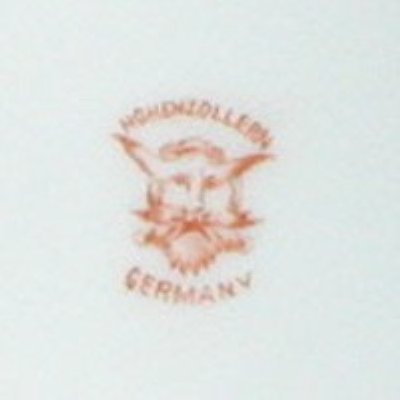
Image 020707-03-02
Used between 1868 and 1918, here an example in red.
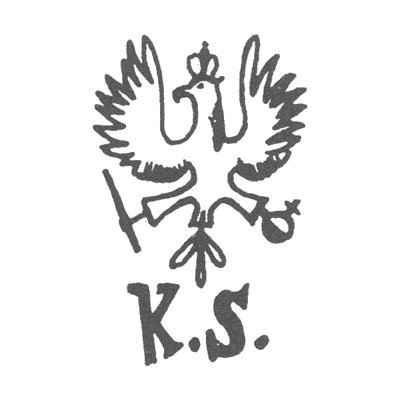
Image 020707-03-03
Used between 1887 and 1918. Registered 1887 but constantly claimed to have been used by Steinmann around 1840 (!) which simply cannot be.
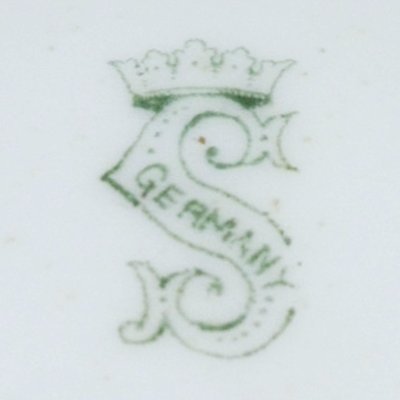
Image 020707-03-04
Used between 1900 and 1932, only found on various special series.
(Picture by usc103)
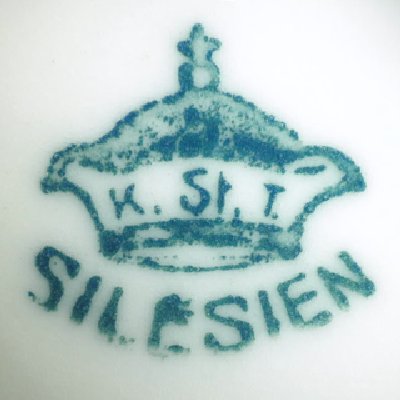
Image 020707-03-05
Used between 1915 and 1938, "K.St.T." crown above "Silesien", registered at the RWZR under №·207·660 on December 18th 1915.
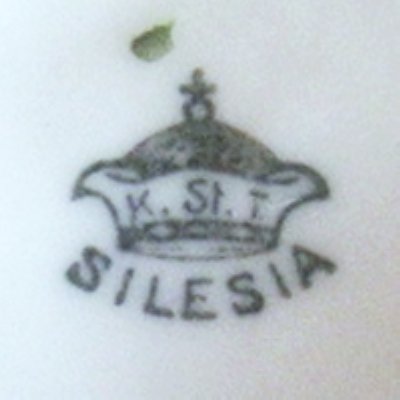
Image 020707-03-06
Used between 1915 and 1938, the "K.St.T." (for K. Steinmann Tiefenfurt) crown above "Silesia", here in black.
(Picture by Hil Nieland)
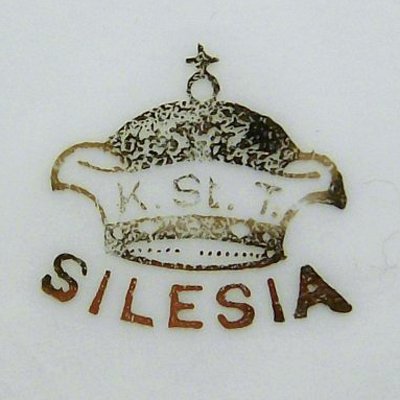
Image 020707-03-07
Used between 1915 and 1938, the "K.St.T." crown above "Silesia", here in gold.
(Picture by Hil Nieland)
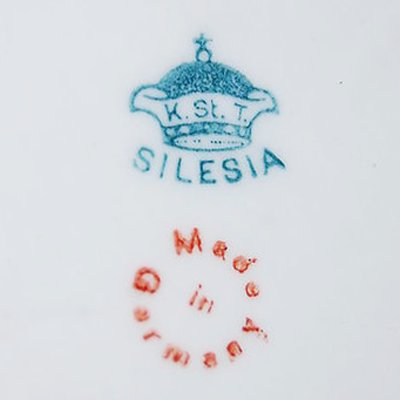
Image 020707-03-08
Used between 1915 and 1938, same as before but with "Made in Germany" addition.
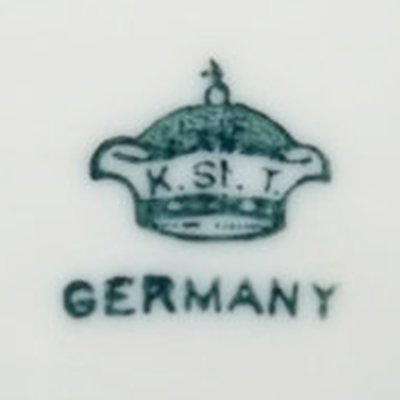
Image 020707-03-09
Used between 1915 and 1938, the "K.St.T." crown above "Germany".
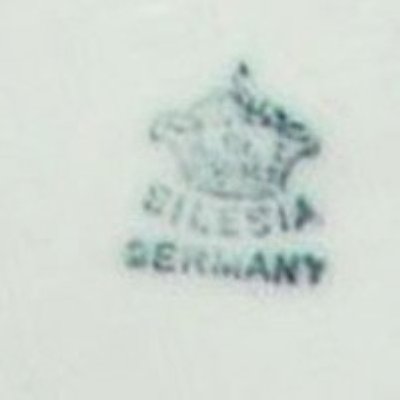
Image 020707-03-10
Used between 1915 and 1938, the "K.St.T." crown above "Silesia" and "Germany".
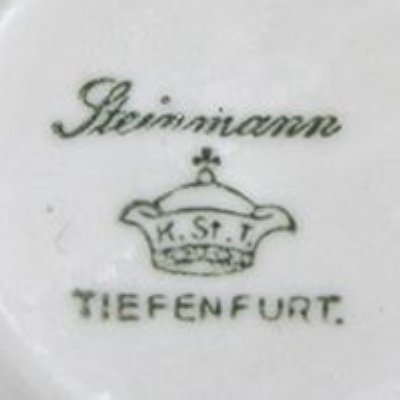
Image 020707-03-11
Claimed to have been used between 1919 and 1938, "Steinmann" above the crown.
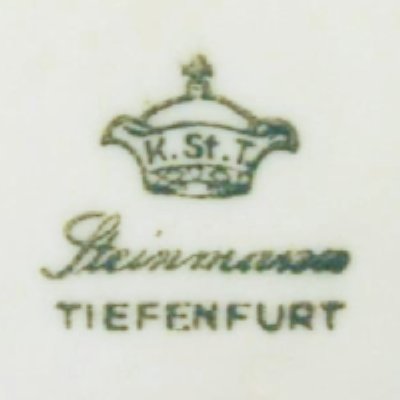
Image 020707-03-12
Claimed to have been used between 1919 and 1938, "Steinmann" directly above "Tiefenfurt".
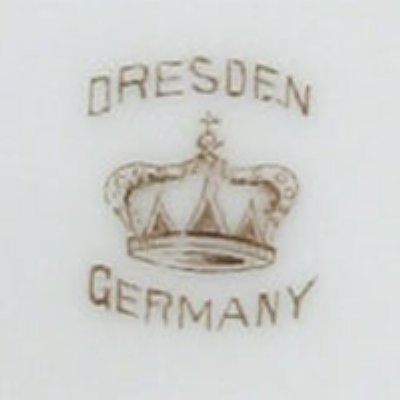
Image 020707-03-13
Used between 1919 and 1932, on items claimed to be decorated in "Dresden" style (most were not).
(Picture by usc103)
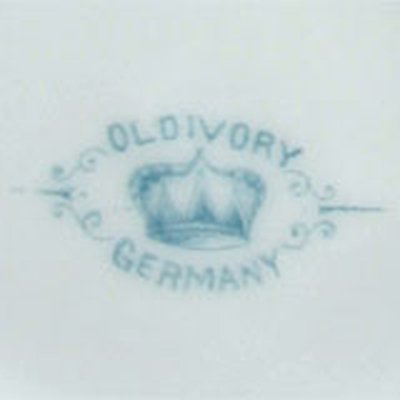
Image 020707-03-14
Used between 1919 and 1932, the "Old Ivory" series mark (in blue or green).
(Picture by usc103)
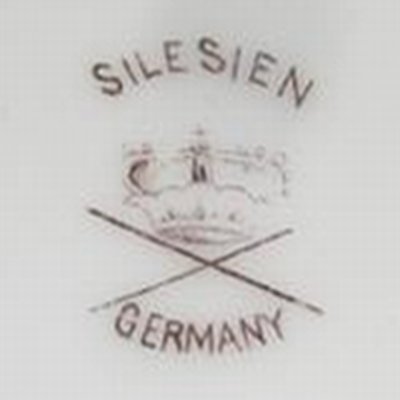
Image 020707-03-16
Used from 1928 until 1932, shows "Silesien" above a different crown. Was also used with "Silesia" instead.
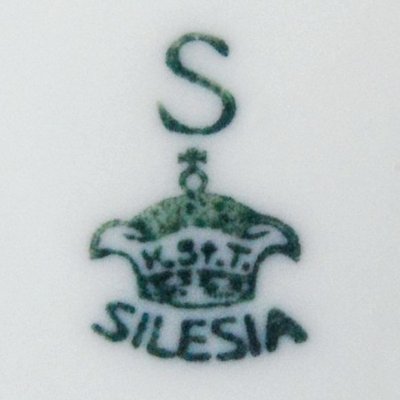
Image 020707-03-17
Registered at the RWZR under №·397·259 on January 19th 1929, claimed use until 1938. Not used often as Tuppack (Tiefenfurt) used a similar one.
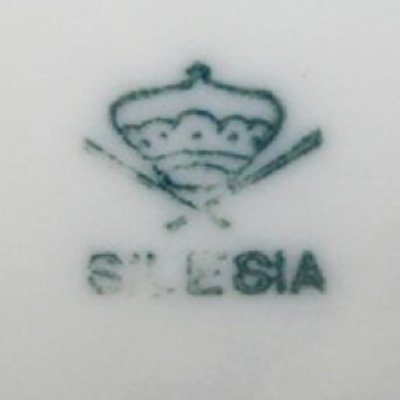
Image 020707-03-18
Used between 1932 and 1938, with "Silesia" only.
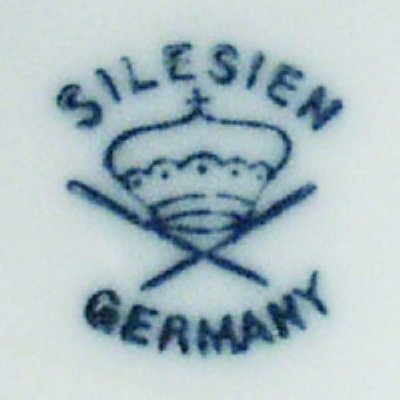
Image 020707-03-19
Used between 1932 and 1938, with "Silesien" and "Germany".
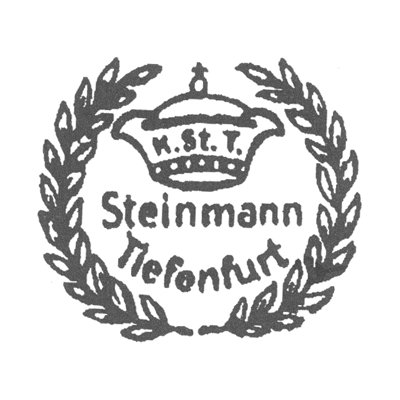
Image 020707-03-20
Used between 1933 and 1935, the two-colored 65th anniversary mark found only on some series.
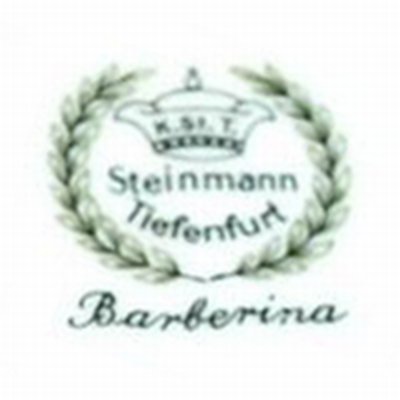
Image 020707-03-21
Example of the previous mark, "Barberina" was the name of the series.
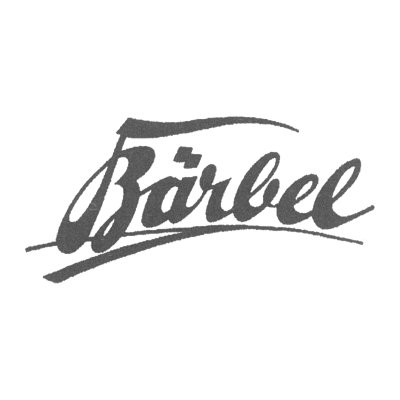
Image 020707-03-22
Used between 1936 and 1938, the Steinmann-own "Bärbel" trademark.
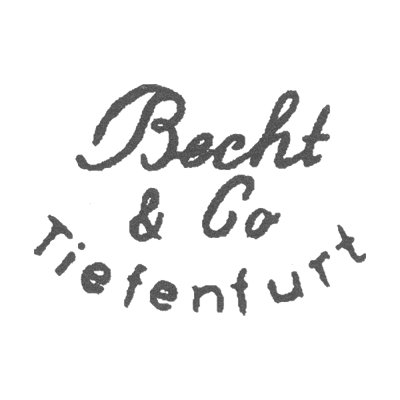
Image 020707-04-01
Used between 1938 and 1945, mark of the Steinmann successors.
© 2004-2025 C.S.Marshall, all rights reserved